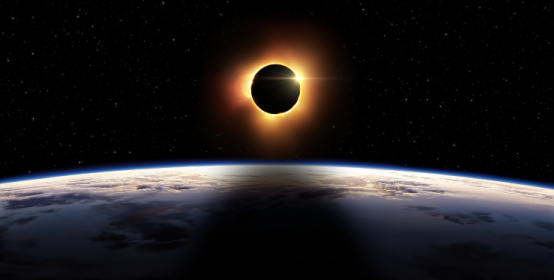
If you've been tuned in to recent news, you're likely aware of the upcoming total solar eclipse. Depending on your proximity to the path of totality, you may have heard about local authorities declaring states of emergency as they grapple with accommodating the influx of eclipse spectators. Some regions are even anticipating a temporary doubling of their population as crowds flock in to witness this rare event. But what exactly are solar eclipses, and just how uncommon are total solar eclipses?
A solar eclipse occurs when the Moon partially or completely blocks the Sun. These can be categorized as partial when the Moon covers only a portion of the Sun, or total, when the Moon entirely obscures the Sun. There are also annular eclipses, where the Moon's apparent size is smaller due to its distance from Earth. In hybrid eclipses, some regions experience a total eclipse while others witness an annular one.
These phenomena result in a reduction of solar illumination on Earth as the Moon obstructs a portion of the Sun's light. The degree of dimming corresponds to the extent of coverage. During a total solar eclipse, darkness can resemble dawn or twilight conditions. This dimming effect influences animal behavior, with birds ceasing their songs and insects quieting down. Additionally, temperatures can drop by as much as 10°F.
Despite the Moon's smaller size compared to the Sun, it can eclipse the Sun due to fortuitous alignments and optical illusions. The Sun's diameter is about 400 times larger than that of the Moon, while its distance from Earth is approximately 400 times greater than that of the Moon. Consequently, both bodies appear similar in size when viewed from Earth.
Situated at the center of the solar system, the Sun governs the orbital dynamics, with Earth revolving around it and the Moon orbiting Earth. Periodic alignments result in the Moon passing between Earth and the Sun, causing total or partial solar obscuration. These occurrences happen approximately every six months during eclipse seasons.
All orbiting bodies lie within an orbital plane, including the Moon orbiting Earth. Visualize the Moon's orbit around Earth as akin to a dinner plate, with Earth at the center. During eclipse seasons, the Moon's orbital plane aligns closely with Earth's orbital plane around the Sun.
Although eclipse seasons occur bi-annually, most events are partial solar eclipses. Total solar eclipses happen roughly every 18 months, but they rarely recur in the same locations.
The last total solar eclipse in the United States was in 2017, spanning the nation from coast to coast. The upcoming eclipse will also be visible in parts of the U.S., with its path of totality stretching from Texas to Maine. Despite occurring within U.S. territory, these events take place in different geographic regions.
Estimates suggest that a total solar eclipse revisits a specific location only every 350-400 years. This translates to approximately once every 13-14 generations.
The “path of totality” denotes the geographic region over which the alignment of the Sun and Moon allows for complete solar obscuration. Observers outside this path will witness only a partial solar eclipse, which is more common.
Can proximity to the path of totality provide a total solar eclipse experience? In short, no.
As explained, the path of totality is the only area where a total eclipse can be observed. Moving away from this trajectory results in a decrease in solar coverage by the Moon. Along the West Coast, for instance, about one-third of the solar disk will be obscured, resulting in a noticeable dimming of the sky but lacking the intense effects of a total eclipse.
For those unable to travel to the path of totality, there's no need to worry. Depending on your location, you'll still witness a partial solar eclipse. Regardless of where you are on April 8th, remember to wear NASA-approved protective eyewear.